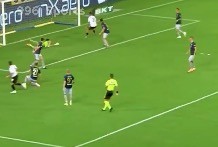
When it comes to handling the weak foot, there’s no one better to ask than Diogo Jota. In the world of professional football, the ability to use both feet effectively is a skill that separates the great from the good. Whether you’re a seasoned player or just starting out, mastering your weaker foot can elevate your game to new heights. And who better to give insights on this than Jota, a player known for his versatility and ambidexterity on the field?
In this professional Q&A session, we delve into the intricacies of improving your weak foot, with Jota offering advice drawn from his own experiences and training. For many players, the weak foot can be a source of frustration. It’s the foot that often feels awkward, lacking the finesse and power of the dominant side. Yet, in modern football, being one-footed can limit your effectiveness on the pitch. This is why players like Jota, who have developed a proficiency with both feet, are so highly valued.
Jota’s journey to becoming ambidextrous wasn’t instantaneous. It involved years of dedicated practice, focusing on technique, balance, and confidence. He emphasizes that the first step to improving your weak foot is acknowledging its importance. Many players tend to shy away from using their weaker foot in matches, opting instead for the safety of their dominant foot. However, Jota advises that the only way to improve is to challenge yourself consistently, even if it means making mistakes in the process.
During the Q&A, Jota discusses the specific drills and exercises that helped him develop his weaker foot. One of his key recommendations is repetition. “It’s all about muscle memory,” he explains. “The more you practice with your weak foot, the more natural it will feel. Start with simple passes and gradually increase the complexity—shooting, dribbling, and crossing.” Jota also highlights the importance of mental focus during these drills. It’s not just about going through the motions but about being mindful of your technique and making adjustments as needed.
Another crucial aspect Jota touches on is the psychological barrier that comes with using the weak foot. Many players, even at the professional level, hesitate to use their weaker foot in crucial moments, fearing a poor outcome. Jota shares that overcoming this mental block was one of his biggest challenges. “You have to trust your weaker foot just as much as your stronger one,” he says. “That trust comes from practice, but also from pushing yourself to use it in real-game situations, not just in training.”
Jota also sheds light on how improving your weak foot can enhance your overall game. For him, it’s not just about being able to shoot or pass with both feet, but about the tactical advantages it provides. “When you can use both feet effectively, you become unpredictable to defenders. They can’t easily anticipate your next move, and it opens up more opportunities on the field.” This versatility is what makes players like Jota so dangerous in attack, as they can seamlessly switch directions and create scoring chances from either side.
In the Q&A, Jota is asked about the importance of a coach’s role in developing a player’s weaker foot. He acknowledges that while personal dedication is key, having a coach who encourages and supports this aspect of development is invaluable. “A good coach will push you to step out of your comfort zone,” Jota notes. “They’ll design training sessions that force you to use your weak foot, and they’ll give you the confidence to do so in matches.”
As the session concludes, Jota offers one final piece of advice for aspiring players: patience. “Improving your weak foot is not something that happens overnight. It’s a gradual process, and there will be moments of frustration. But if you stay committed, you’ll see the benefits on the field.”
In summary, this Q&A with Diogo Jota provides invaluable insights into the process of developing a stronger weak foot. Whether you’re a young player or a seasoned professional, the lessons from Jota’s experience can help you enhance your game. The journey to becoming ambidextrous is challenging, but with the right mindset, dedication, and guidance, it’s a goal within reach. So, the next time you’re struggling with your weak foot, remember Jota’s advice: embrace the challenge, trust the process, and keep pushing yourself to improve.
